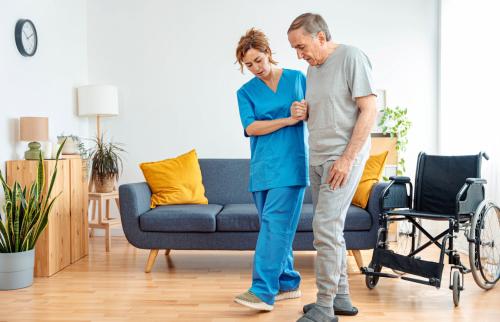How often do you read an obituary saying the person “died from complications following a fall”? Probably very often. But a Centers for Disease Control and Prevention report underscores that most falls are – or should be – avoidable. Many falls are triggered by simple things like interactions or side effects from common medicines, bad footwear or outdated eyeglasses, or just a badly placed rug or a missing handrail. In his book Being Mortal, Atul Gawande tells of a physician who focuses first on the feet and shoes of his elderly patients – knowing these can pose a far bigger danger than the patient’s immediate medical condition.
Most falls could be avoided with simple, inexpensive actions. But our health system tends to overmedicalize aging, and so it will pay tens of thousands of dollars to treat a hip fracture when a few dollars could have prevented the fall. It turns out that organizing a “village” to monitor and support an elderly person who is a candidate for a fall is much cheaper than sending an ambulance after a fall.
So what can be done? Several things. For instance:
- Technology increasingly can help identify conditions when a fall may happen and send an alert. One intriguing example is the development of “smart” pills with tiny sensors that are linked to monitoring software which can track drug compliance and adverse reactions that might pose a risk to an elderly patient. Monitoring software could soon alert nearby family or neighbors when there is an enhanced danger of a fall.
We know that safety checks and minor modifications of homes can sharply reduce the likelihood of falls. That’s rarely been part of the follow-up after a hospital discharge. But that may slowly be changing. The financial penalties hospitals now face if a discharged Medicare patient is readmitted for certain conditions within 30 days is nudging hospitals to work with the community and to investigate risk factors in the patient’s home. In Maryland, penalties result from readmissions for any reason, including falls – giving hospitals in the state even more incentive. Now at least one hospital uses EMS personnel and volunteers to conduct safety checks in the homes of at-risk discharged patients.
Senior villages organize a network of neighbors and volunteers in a community to both improve the social connectedness of elderly residents and providing them with the kind of support they need to be happy and safe. Volunteers help with everything from changing light bulbs and fetching groceries to installing grab bars and fixing unsafe furniture and furnishings that can lead to falls. Some villages even provide volunteers to accompany elderly people to physician visits to take notes and help follow-up.
Many – maybe even most – falls do not have to happen. But a combination of technology, better incentives for health institutions, and drawing on old-fashioned community could do a lot to cut the number.
Editor’s Note: this post first appeared on the BPC Health and Housing Expert Forum.



Commentary
Op-edDramatically reducing the number of elderly falls is within reach
December 2, 2015